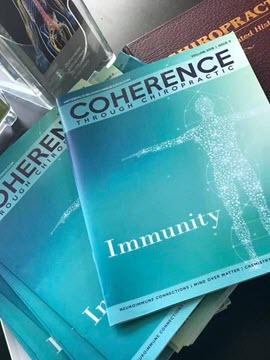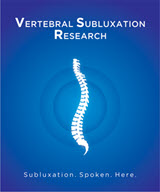Kwon Awarded Scholarship for Advanced Imaging Fellowship

Christie Kwon DC, MS was recently awarded a scholarship by the Foundation for Vertebral Subluxation (FVS) to participate in a Functional MRI Visiting Fellowship. The Fellowship took place earlier this year and has resulted in a flurry of activity and excitement at the FVS because of the potential this holds for subluxation research.
It’s been known for almost 100 years that neural activity causes localized changes in blood flow and researchers have demonstrated that neural activity causes localized changes in blood oxygenation. Physicists, radiologists, and neuroscientists have now demonstrated that blood flow and blood oxygenation can be detected by the noninvasive technology of MRI. This has led to a dramatic increase in functional brain imaging work with humans. Because this noninvasive technique permits many repetitions of experimental procedures on a single subject, it is rapidly becoming the method of choice for neuroscience research in functional brain mapping.
In addition to her other work overseeing the FVS’s Practice Based Research Network (PBRN) and several studies that fall under it, Dr. Kwon has developed a keen interest in advanced imaging and its role as an objective assessment of vertebral subluxation.
While there are a few folks in chiropractic that have been making the seminar rounds showing pre and post advanced imaging studies from their practice - very little of anything has actually been studied or published on some of the most valuable tools available to chiropractic for researching the subluxation.
“We plan on changing that” stated Matthew McCoy DC, MPH Vice President of the FVS. McCoy continued “Chiropractors have long utilized plain film imaging as an objective means of analysis, and in recent times, some practitioners have incorporated the use of advanced imaging methods such as CT, MRI and fMRI. Through the development of an Advanced Imaging Research Agenda the FVS plans on being at the forefront of this.”
Dr. Kwon, who is a chiropractor and also holds a Master’s Degree in Biomedical Engineering, stated she is “Excited to be able to explore these untapped resources for researching vertebral subluxation. For example, functional MRI technology allows researchers to observe hemodynamic responses by imaging changes in blood flow which represent changes in neural activity.” Kwon went on “Another example is task-oriented physiological responses and flow of cerebrospinal fluid which can also be measured utilizing MRI.”
The Fellowship Program was intensive and included several guest lecturers and visiting instructors adding to the wealth of information shared. The Fellowship included a group project where each group was assigned a project to design an fMRI research project. These were presented on the last day.
According to Kwon this experience demonstrated the complexity of fMRI as well as the wealth of information that can be obtained from small numbers of scans. Kwon cautioned “With so many considerations in research design, every decision in an fMRI study comes with implications for other factors of the study.”
One of the most exciting topics covered was resting state functional connectivity and we particularly look forward to applying this information to FVS' research agenda on Advanced Imaging. Even more exciting were presentations on utilizing EEG and fMRI simultaneously. Measuring brain function has become the newest craze in chiropractic even though none of the work being promoted even uses subluxation terminology or objective, valid and reliable methods to measure whether or not a subluxation even existed at the time of intervention.
Even worse is that the researchers in these studies equate spinal manipulation with adjustment and joint dysfunction with vertebral subluxation even though these terms are not synonymous.
According to Dr. Christopher Kent DC, JD President of the FVS, and Professor and Director of Evidence Informed Practice at Sherman College of Chiropractic:
"The Foundation for Vertebral Subluxation is committed to utilizing chiropractic's unique methods and lexicon in its research as these are the only things that separate us from other purveyors of spinal manipulation.”
Dr. Kwon along with Kent and McCoy has developed a document titled: An Advanced Imaging Research Agenda for the Evaluation of Vertebral Subluxation and Clinical Outcomes Related to its Management.
This Agenda will be presented at various conferences and the roll out of specific projects related to the agenda will be announced as they are implemented.
Other topics covered during the Fellowship included:
- Experimental Task Design (behavioral and cognitive)
- Data analysis (preprocessing), estimation, and corrections
- Virtual Box analysis software trial
- Computational Neuroanatomy (surface analysis) - observing gyri vs sulci of the brain
- Research design workshop with consultations
- Inference and Data Analysis - Principal vs Independent Component Analysis, Functional vs Effective Connectivity
- 1st and 2nd level Estimation; Considerations in MR parameter selection
- Diffusion MRI, Tractography
- Utilization of public/large datasets, Reproducibility
- fMRI software demonstration (VirtualBox)
- A review of MR Physics
- Clinical considerations of MR for post surgical planning
- An overview of software packages
- Quality Assurance in MR
- Thresholds, reliability, data. analysis
- EEG and fMRI
For more information about the Foundation for Vertebral Subluxation and its Research Agenda contact us:
Matthew McCoy DC, MPH
Vice President
vertebralsubluxation@gmail.com
Foundation for Vertebral Subluxation
http://www.vertebralsubluxation.org
###

Blogs
- The Chiropractic Cartel: A Look Back at Bias in Accreditation and its Imact on Today's Profession
- Inside Montana's Chiropractic Monopoly: ACA & MCA's Brazen Board Takeover
- Concerns Grow About Control of the NY State Chiropractic Board by the ACA - Use of X-ray in NY Under Threat
- Reproductive Health Information and Chiropractic Care: Navigating New Privacy Regulations
- Navigating Substance Use Disorder (SUD) Consent: What Chiropractors Need to Know













